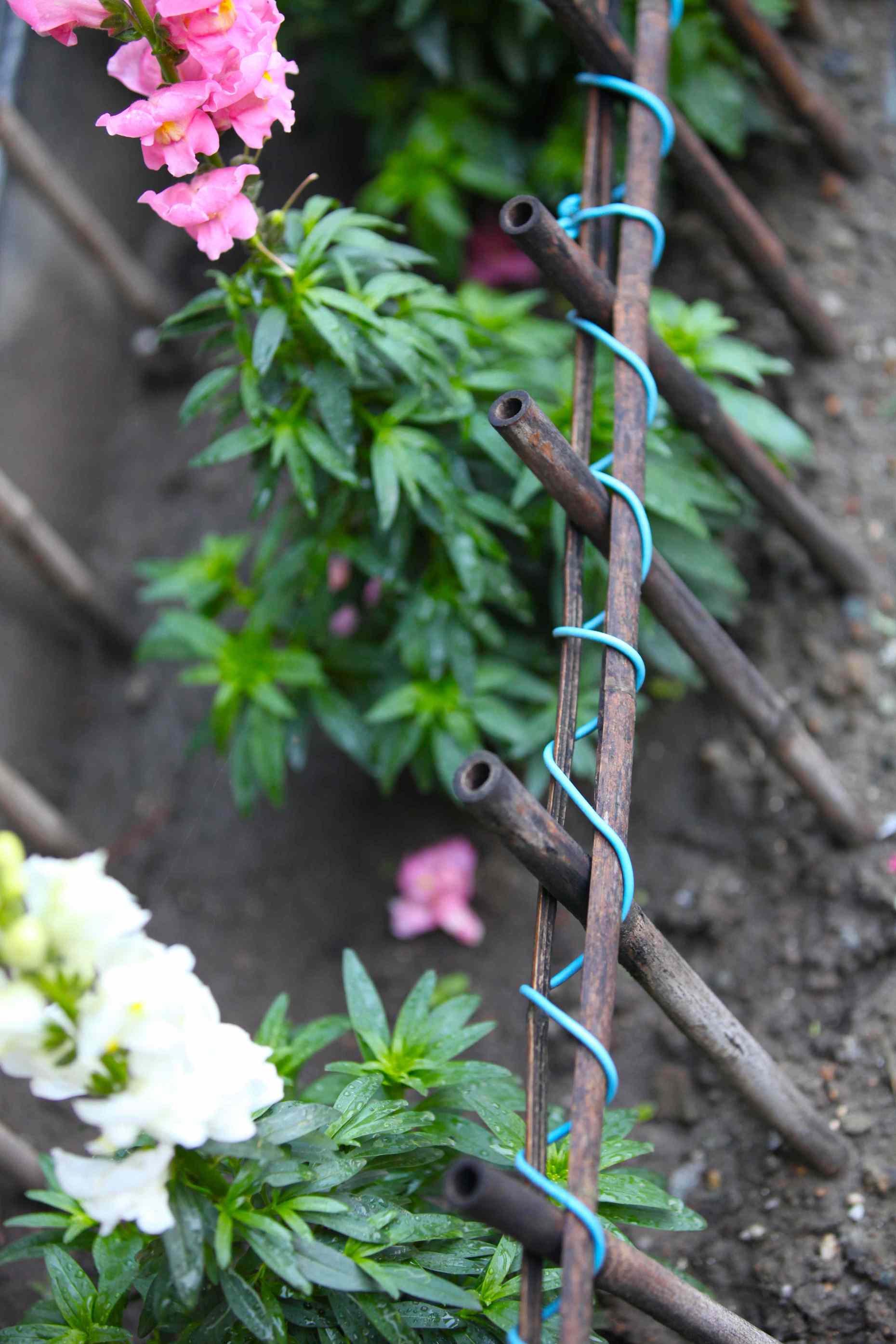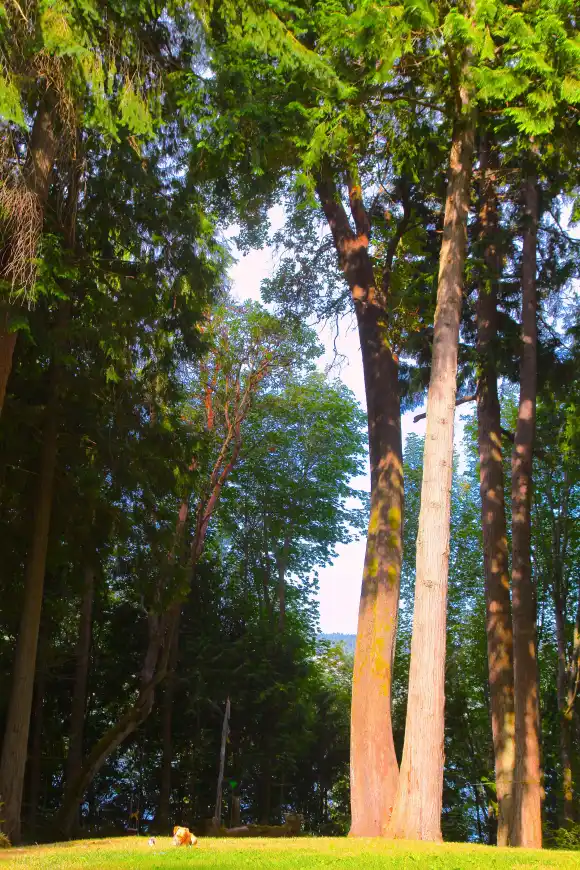
Tall Trees, Photo © Liesl Clark
We live out in the sticks — literally. All around us, sticks tend to abound. Our land is a thin strip of a clearing in a second growth fir and cedar forest punctuated by the green canopy of enormous big leaf maples. We’re on a tree-sheltered bluff above Puget Sound where winter winds blow down branches like myriad arm parts of stiff wooden dolls.
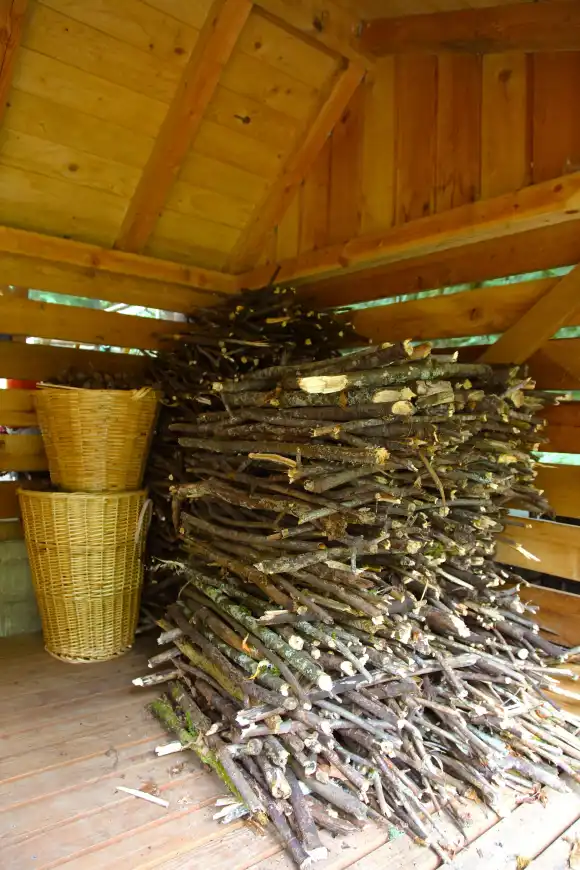
Kindling, Photo © Liesl Clark
We pick up the branches all winter long, a resource dropped from above, but readily put to use. Nothing is wasted here. Large pieces are cut into lengths for the fire as we heat our home entirely with wood. Small bits are used as kindling, we even pick up many of the pine cones to use as firestarters and store them in baskets, and the green wood goes in the stick pile, to be temporarily used as shelter for the creatures that live deep inside.
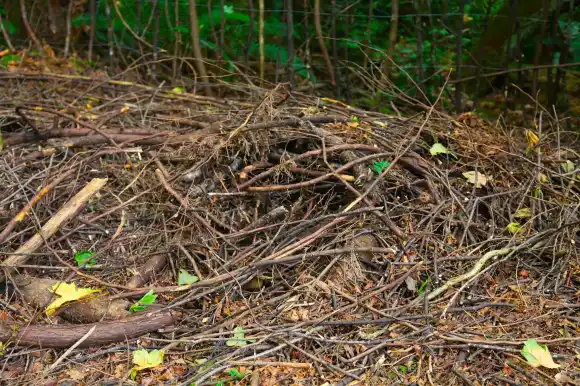
Little Creature Habitat: The Stick Pile, Photo©Liesl Clark
Every property should have a stick pile. It provides safe cover for wild birds and we know a possum or 2 live there. Think Christopher Robin and the little homes his friends had.
Come spring, we always have stick construction to do. Our whole property is outlined with natural fencing to keep deer at bay. The sticks are the mainstay barrier, not a serious one, but a natural barrier that doesn’t set us too far apart from the forest beyond.
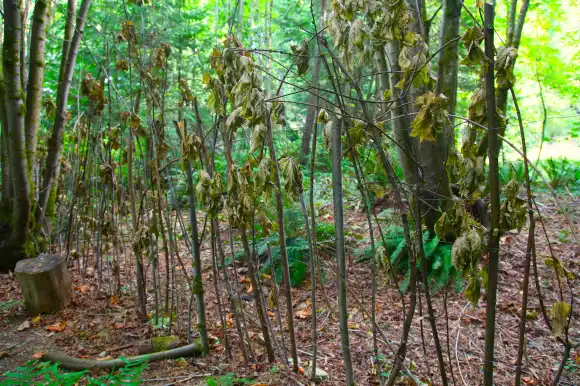
Deer-proof fence? Well, sort of. Photo © Liesl Clark
But it’s the vegetable garden that gets all the attention around here. It’s enclosed by a stick structure unmatched, perhaps, on the planet.

The idea started with my son, Finn, who at 4 decided we needed to build a fence for a garden. We designed lengths of fence that went into the ground, pre-built by the 2 of us: Three lengths were horizontally affixed to 2 vertical posts with thin vertical sticks then fixed every foot or so. We built half a garden’s -worth and then took a break, a little discouraged by the huge effort. Then our friend, Ang Temba, arrived from Nepal and recognized the design as one commonly used in rural mountain villages. He finished the project with renewed vigor. The fence is hardware-dependent, 4-inch long screws and a power drill do the job, as well as a post-hole digger to bury the thick posts.
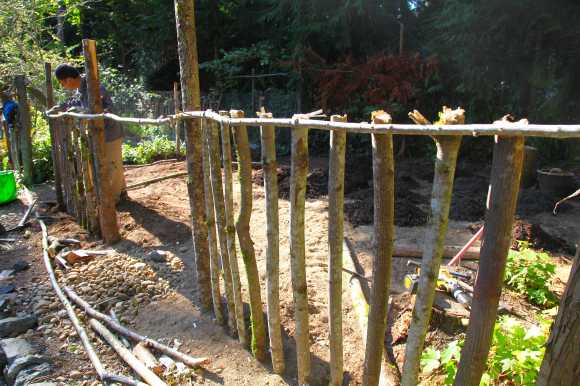
Stick Fence 2.jpg Photo © Liesl Clark
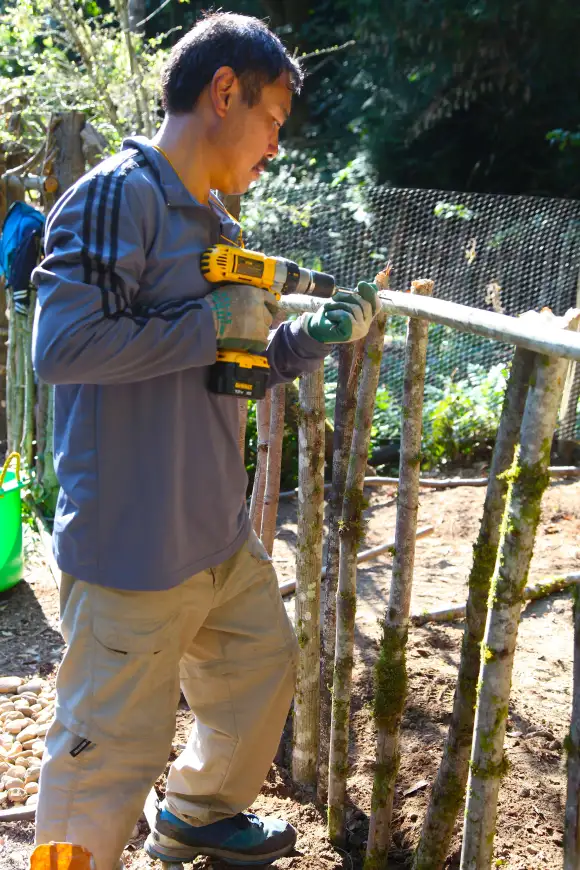
Drilling Stick Fence.jpg Photo © Liesl Clark
Beautiful arched hemlock and cedar branches adorn the uppermost reaches of the fence, some 7-8 feet high, to deter deer from jumping inside.
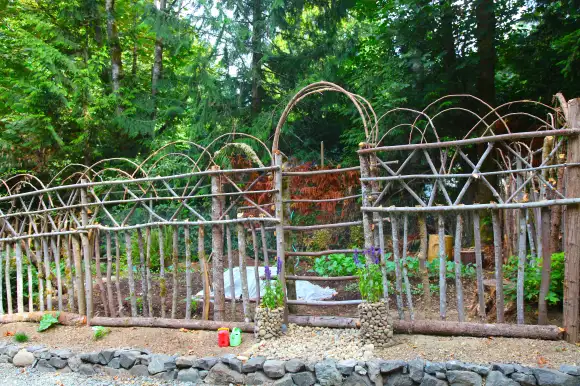
Arches National Fence, Photo © Liesl Clark
We liked the structure so much that when it came to enclosing our chickens (to protect them from raccoons, bald eagles, and mink) we built a stick fence for them, too. It’s actually an entire timberframe aviary fully enclosed in requisite chicken wire.
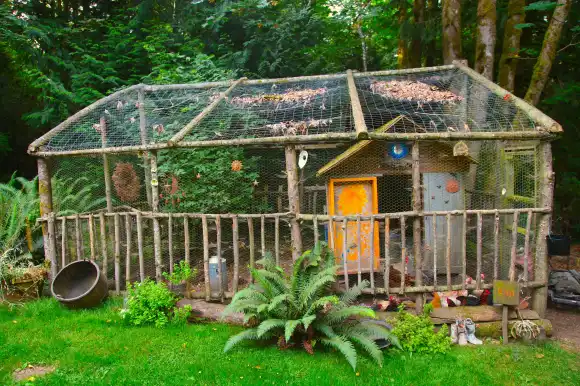
Chicks in Sticks, Photo © Liesl Clark
As soon as we finished it, our coop, known as “Chicks in Sticks,” was featured in Bainbridge Island’s first Tour de Coop, surely picked for the whimsical stick-fort-like hideout the feathered girls call home.
The trees must look on with amusement, peering down through their branches at our woven stick world below. Why do we gain such pleasure from making sense of the materials made readily available to us by the wind, the land, and the tall trees above?


